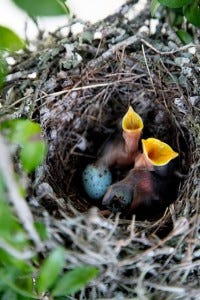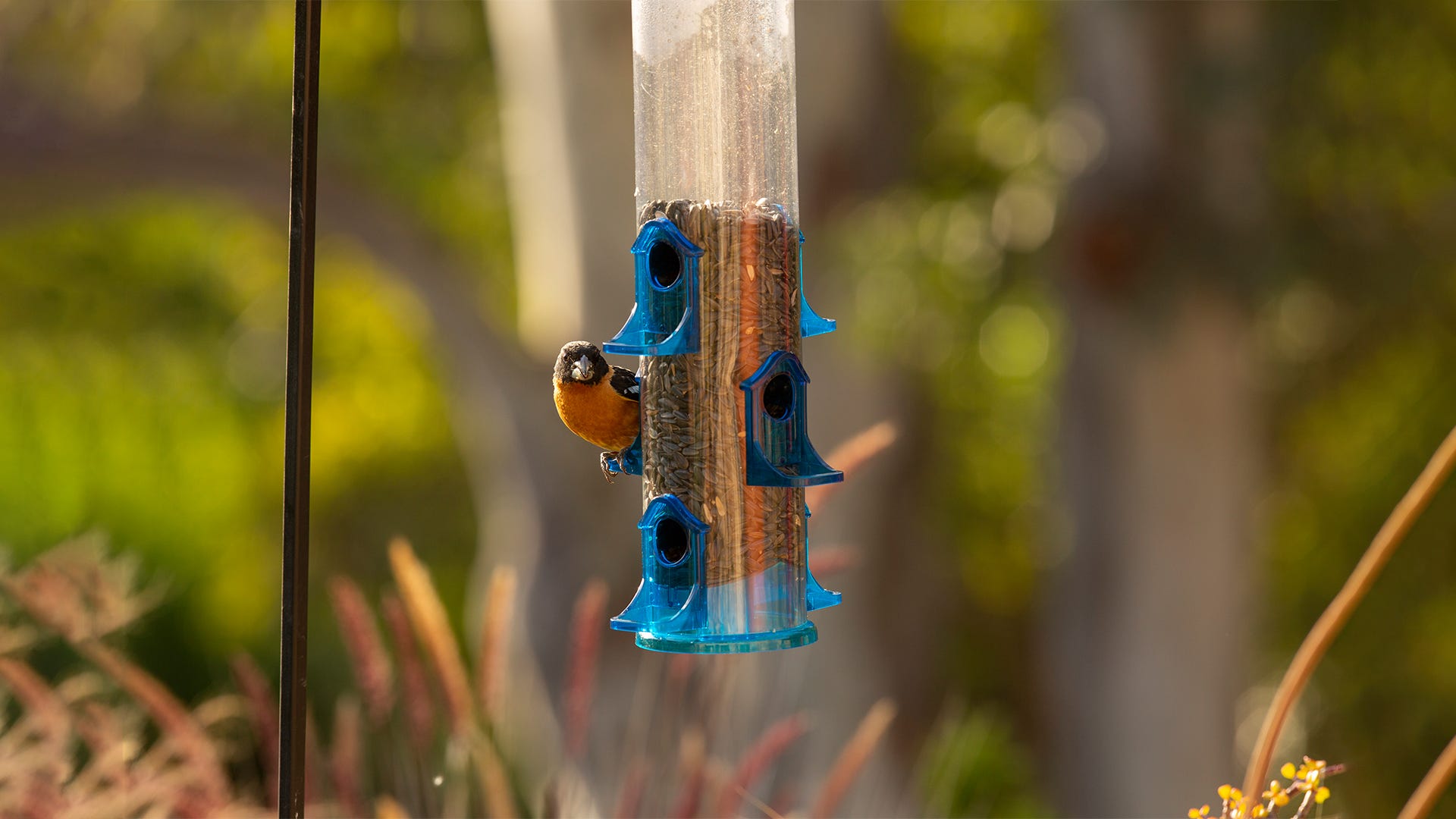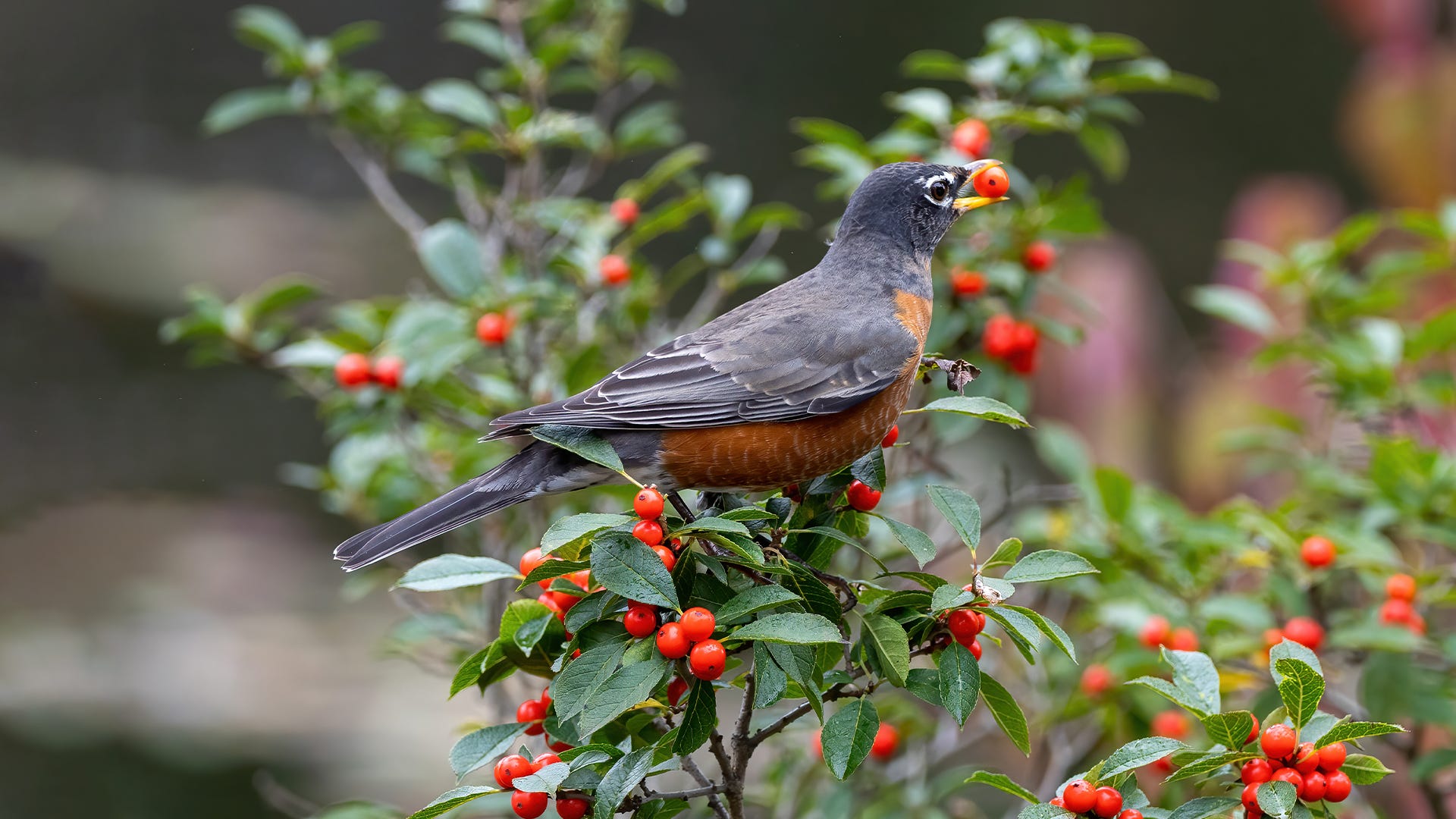
Breeding season comes around each year; independent of the location, climate, and species, mating occurs annually nationwide. Most wild birds only breed to procreate and expand their species rather than simply for the pleasure of the act. In fact, most male wild birds are sterile outside of the breeding season.
So, do you know when breeding season occurs where you live? Do you know the signs of birds in love? Well, it’s our job to make sure that all of our bird-feeding friends, like you, are in the know!
Signs of the season
- SPRING: You can expect to see breeding season happening most often during the spring. You know — when the snow is melting and rain is more frequent. For birds, there is an ever-increasing food supply and warmer temperatures, both of which makes raising young easier.
- BLOOMS: In the spring, flowers and plants start popping up in gardens and yards. Migrating birds follow the bloom cycle, and evidence of a fresh plant life drives birds northward.
- FEATHERS: During the spring, keep an eye on the wild birds visiting your bird feeders. Has their plumage changed to include bright feathers and appearance? Have these wild birds become more territorial of space and food? These are sure signs that the breeding season is right around the corner.
- SONG: Walk outside and listen. If you notice an increase in bird songs, then breeding season is practically here! Most wild birds will sing in order to attract mates and make themselves more attractive.
Breeding season indicators
Have you spotted a new nest or heard some chicks in your yard? Trying to figure out what bird is occupying what space? Or just what those hatchlings are? You can figure it all out if you consider the clues:
-
 WILD BIRD SPECIES: The species of a wild bird has a large impact on their breeding behaviors. Some wild birds breed later than others, while some have to migrate greater distances, and others may product multiple broods.
WILD BIRD SPECIES: The species of a wild bird has a large impact on their breeding behaviors. Some wild birds breed later than others, while some have to migrate greater distances, and others may product multiple broods. - LOCATION: Breeding ranges, or the geographic location for nesting, varies by species. It also depends on the migrating pattern that’s unique to each wild bird and species. Think about it – the father north a bird has to travel, the later their breeding season. Learn the species known to breed in your area.
- FOOD SUPPLY: Birds will nest and breed close to easily accessible food supplies. They need to ensure that they can provide adequate nutrition to their newly hatched chicks. Knowing their diet can uncover their identity.
- WATER: We mentioned the melting snow and increasing rain that comes along with springtime, but those environmental changes are necessary for breeding season. The more water that fertilizes plants and flowers, the quicker the flowers bloom, the more food is available for birds, the more likely they are to breed nearby.
- CARE: The maturation stages of new chicks varies, but it certainly is a major factor in when breeding season begins. If the incubation and care period for a chick is longer, the earlier mating occurs.
- BROOD NUMBERS: The more broods (multiple chicks hatched at once) that hatch, the earlier breeding season takes place. The more chicks there are for a mother bird to incubate and care for, the more time it takes for them to receive the attention they need for maturation.
- NESTING LOCATION: Some wild birds use empty nests that have since been abandoned by other wild birds. These species may breed earlier or later in the season depending on when they are using the nest.
Overall, a breeding season usually only lasts a week or two at most. After that, at least one of the parents is responsible for caring for the young and coaxing them through maturation so that they can become independent birds in time. To prepare for breeding season, and bird feeding season, make sure to offer bird feeders and bird houses as soon as possible. Store brush piles in your yard and take the necessary steps to safeguard mating birds from backyard predators.







